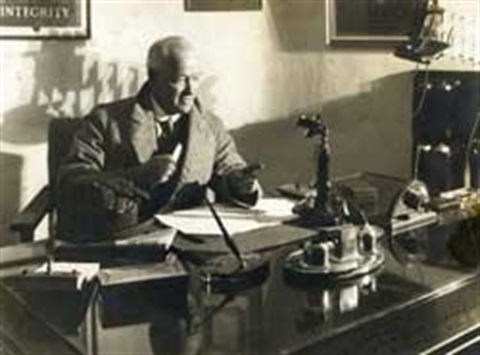History of photography in Kiama

Photographic art was introduced to Kiama in the 1860s by travelling photographers who used the wet plate method. The first permanent photographic studio was begun by the James Brothers who opened their Kiama business in 1868. Many of their historically valuable photographs still exist with most of these images being held by various libraries. They were followed by S. Flodin, a coach painter and artist, who took up photography as a side line in 1878 and eventually became renowned in Kiama’s line of photographers until his death in 1903. Toward the end of the nineteenth century, R. H. Holden and Samuel Cocks took up the art and remained town photographers.
Henry Holden was apprenticed to S. Flodin, in Manning Street, and continued the business on his own when Flodin moved to Wollongong. Henry grew up in Kiama and became a photographer of renown, winning medals and awards at many exhibitions, including the World’s Fair in Chicago in 1896.
Samuel Cocks was a professional photographer who operated a photographic studio in Manning Street, Kiama from the 1890s to the 1920s. Copies of his scenic photographs were used in numerous tourist publications and postcards of the era.
A significant amount of his business involved photographing dairy cattle belonging to local farmers. Some of these photographs were used by Francis (Frank) McCaffrey in his publications: First Century of Dairying (1909) and History of Illawarra and its Pioneers (1924).
The Cocks Collection comprises over 800 glass plate negatives, taken by Mr Cocks and other local photographers, depicting the landscape, architecture, and people of Kiama and the surrounding South Coast district. The collection was deposited with the Archives at Wollongong University in the early 1980s on loan from the Weston family of Kiama.
In 1913, Kiama Independent, published instructions for those who sat for a portrait at the turn of the century:
“When a lady sitting for a picture would compose her mouth to a bland and serene character, she should just before entering the room say ‘bosom’, and keep the expression into which the mouth subsides until the desired effect in the camera is evident. If, on the other hand, she wishes to assume a somewhat nobler bearing, not suggestive of sweetness, she should say ‘brush’, the result of which is infallible. If she wishes to make her mouth look smaller, she must say ‘flip’, but if the mouth is already too small and needs enlarging, she must say ‘cabbage’."
Recently a single aerial photograph of Kiama was donated to the Library. There were no details but upon investigation it appears that the photograph was probably taken in 1903 by Chester Vaniman, an American photographer, who had been commissioned to create promotional images for a Sydney company. Vaniman was an 'Acrobatic Photographer' who shot images from hot air balloons, ships mast, tall buildings and even a homemade 30-metre pole.